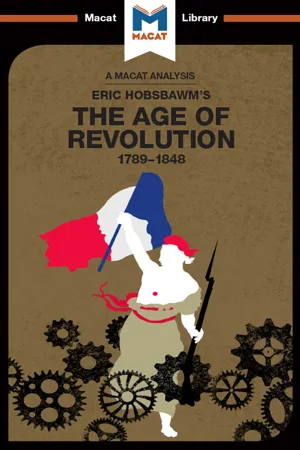
- 114 pages
- English
- ePUB (mobile friendly)
- Available on iOS & Android
About this book
The Age of Revolution is the first of four works by Eric Hobsbawm that collectively synthesize the ideas he developed over a lifetime spent studying the nineteenth and twentieth centuries.
Hobsbawm's vision is important – he was a lifelong Marxist whose view of history was shaped by a fascination with social and economic history, yet who privileged evidence over political theory – but the real power of these works, and especially The Age of Revolution, emanates from the wide range of the author's reading and his mastery of the critical thinking skill of evaluation.
It is this skill that allows Hobsbawm to combine insights drawn from decades of reading into an original thesis that sees the crucial "long 19th century" as a period shaped by "dual revolution" – the twin impacts of the Industrial Revolution in Britain, and the French Revolution on the continent. Hobsbawm supplemented his evaluative excellence with a firm grasp of reasoning, crafting a volume that contains brilliant, clearly-structured arguments which explain complicated ideas via well-chosen examples in ways that make his work accessible to intelligent general readers and scholars alike.
Frequently asked questions
- Essential is ideal for learners and professionals who enjoy exploring a wide range of subjects. Access the Essential Library with 800,000+ trusted titles and best-sellers across business, personal growth, and the humanities. Includes unlimited reading time and Standard Read Aloud voice.
- Complete: Perfect for advanced learners and researchers needing full, unrestricted access. Unlock 1.4M+ books across hundreds of subjects, including academic and specialized titles. The Complete Plan also includes advanced features like Premium Read Aloud and Research Assistant.
Please note we cannot support devices running on iOS 13 and Android 7 or earlier. Learn more about using the app.
Information
Table of contents
- Cover
- Title Page
- Copyright Page
- Table of Contents
- WAYS IN TO THE TEXT
- SECTION 1: INFLUENCES
- SECTION 2: IDEAS
- SECTION 3: IMPACT
- Glossary of Terms
- People Mentioned in the Text
- Works Cited